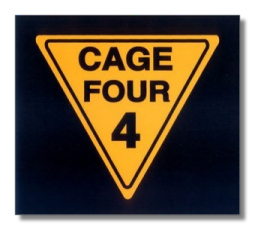
The Internet's Premier Classical Music Source
Related Links
- Cage Reviews
- Latest Reviews
- More Reviews
-
By Composer
-
Collections
DVD & Blu-ray
Books
Concert Reviews
Articles/Interviews
Software
Audio
Search Amazon
Recommended Links
Site News
 CD Review
CD Review
The so-called "number pieces," of which there are around fifty, occupied John Cage during the last years of his life. Generally speaking, the "main" number indicates how many performers are required. The superscript, when present, indicates how many works have been written for this number of performers. In other words, Four4, which was written in 1991, was the fourth number piece written for four performers. Rob Haskins's booklet notes tell us that Cage would have read his title as "Four for the fourth time," not "Four to the fourth power," as I might have wanted to do.
One thing that is not explained in the booklet notes is why only one performer is listed – and the only place percussionist Glenn Freeman's name appears, modestly enough, is on the spine of the CD case. Was there overdubbing? OgreOgress doesn't say. I'm not entirely sure, but I don't think it's possible for one performer to create all of the sounds heard on this CD "live," unless he or she has more limbs than the average human.
If, in his number pieces, as Haskins suggests, Cage was thinking of "how to create a musical metaphor for an "enlightened" anarchy, a society of individuals who live together in harmony without having to sacrifice their freedom as individuals to a central governing authority," then one must call overdubbing a form of techno-autocracy. Either that, or one most posit that the performer meets at least some of the diagnostic criteria for multiple personality disorder!
Four4 is a good example of the use of what Cage called "time brackets" – a concept that he had used as early as 1952. Within each time bracket, the performer is given a note or a series of notes. The performer is also given a timeframe during which he or she must commence the musical activity presented in the brackets, and a timeframe during which he or she must complete it. In Four4, Cage even leaves it up to the performer(s) which percussion instruments are to be used. Freeman elects to use a variety of drums, rattles, and other noisemakers. Sound is produced in various ways too: through hitting, shaking, bowing, and so on. I think many casual listeners would be caught off-guard if they were told that they were listening to, in effect, a percussion CD. I think Cage was less interested in telling performers and listeners alike what was on the menu than he was in letting them taste things and draw their own conclusions, or lack thereof.
Some of the Cage number pieces I've heard recently have been relatively garrulous, but Four4 has some long, very Cage-like silences. These went nicely with the sound of crickets and tree frogs in my backyard. At different points, you might think the CD is over, but then you are rattled (or shaken, or hit) to discover you're wrong. In the end, if Four4 is "about" anything, it is about listening. "Duh," I hear you say, "what music isn't?" When, however, was the last time you watched yourself listening? Four4, a demanding mixture of frugality and fragility, of self-denial and self-analysis, gives me the eerie impression that it is listening to me as much as I am listening to it.
The performance is self-recommending, and the engineering does what it needs to do.
Copyright © 2002, Raymond Tuttle





















